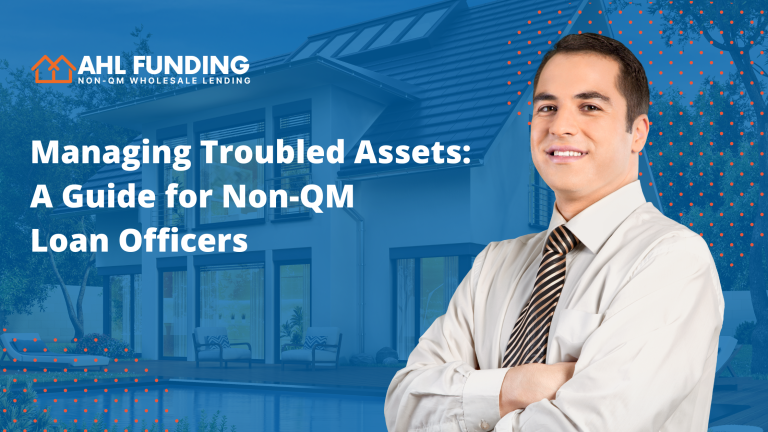
The current economic climate has made it increasingly challenging for non-QM loan officers to manage troubled assets. Delinquencies and foreclosures weaken portfolios, lower property values, and push loan-to-value ratios above their required thresholds. This article will explore what non-QM loan officers can do to manage troubled assets.
Troubled assets are loans that are not performing as originally anticipated. They are either non-performing or sub-performing. Non-performing loans (NPLs) are those where the borrower is no longer able to meet their obligations, causing a default. This category can include borrowers who haven’t made payments for a period of time, as well as those with loans that have reached maturity and are unable to be refinanced. Sub-performing loans (SPLs) are typically loans that are not officially in default but are not performing up to the standards set in the loan agreement. Examples include loans that are past due for more than 30 days, or those that are frequently paid late. While SPLs are generally considered to have less risk than NPLs, it is equally important for non-QM loan officers to closely monitor whether the borrower’s financial situation improves in a timely manner.
When dealing with troubled assets, non-QM loan officers should consider educating borrowers on how to work with them to restructure troubled loans. If a borrower cannot make monthly payments due to a rise in interest rates or a temporary job loss, for example, the lender may consider lowering the payments or delaying select payments until the payoff date to give the borrower some breathing room. Refinancing the loan or extending the loan term are also viable options to consider.
When working with a hostile borrower who is unwilling to collaborate on solutions, non-QM loan officers must take more drastic measures to address impending risk. One option is to bring on a special loan servicer who can implement strategies to manage a borrower in default, or even a foreclosure process down the road. When looking for a special loan servicer, it’s important to find one that can meet the needs of a specific portfolio, such as different asset classes or deal types. There is no one-size-fits-all solution to debt management, so non-QM loan officers who interview multiple brokers and servicers will ultimately have greater levels of success.
Non-QM loan officers must be proactive in managing troubled assets. Troubled assets can be a heavy burden, tying up significant time and money while draining precious resources. By educating borrowers, considering refinancing or extending loan terms, and bringing on a special loan servicer when necessary, non-QM loan officers can successfully manage troubled assets.
At AHL Funding, we specialize in helping non-QM loan officers access the funding they need to serve their clients. Our range of programs includes bank statement loans, jumbo loans, and asset-based loans, among others. We work with loan officers to create custom funding solutions that meet their specific needs. If you’re a non-QM loan officer looking to expand your portfolio, we invite you to apply to AHL Funding today.

Our goal is to shape and build the next generation of mortgage lending with exceptional customer service, integrity, strength and experience.
© 2024 AHL Funding | Privacy Policy | Company NMLS: 1370963
AHL Funding DBA American Home Loans All rights reserved. www.nmlsconsumeraccess.org. Rates, fees and programs are subject to change without notice. Other restrictions may apply. AHL Funding DBA American Home Loans is a Wholesale Lender. We work with mortgage brokers to originate loans.
Subscribe to AHL Funding and recieve insider news, tips, and resources for loan officers.
*We never spam, unsubscribe any time.